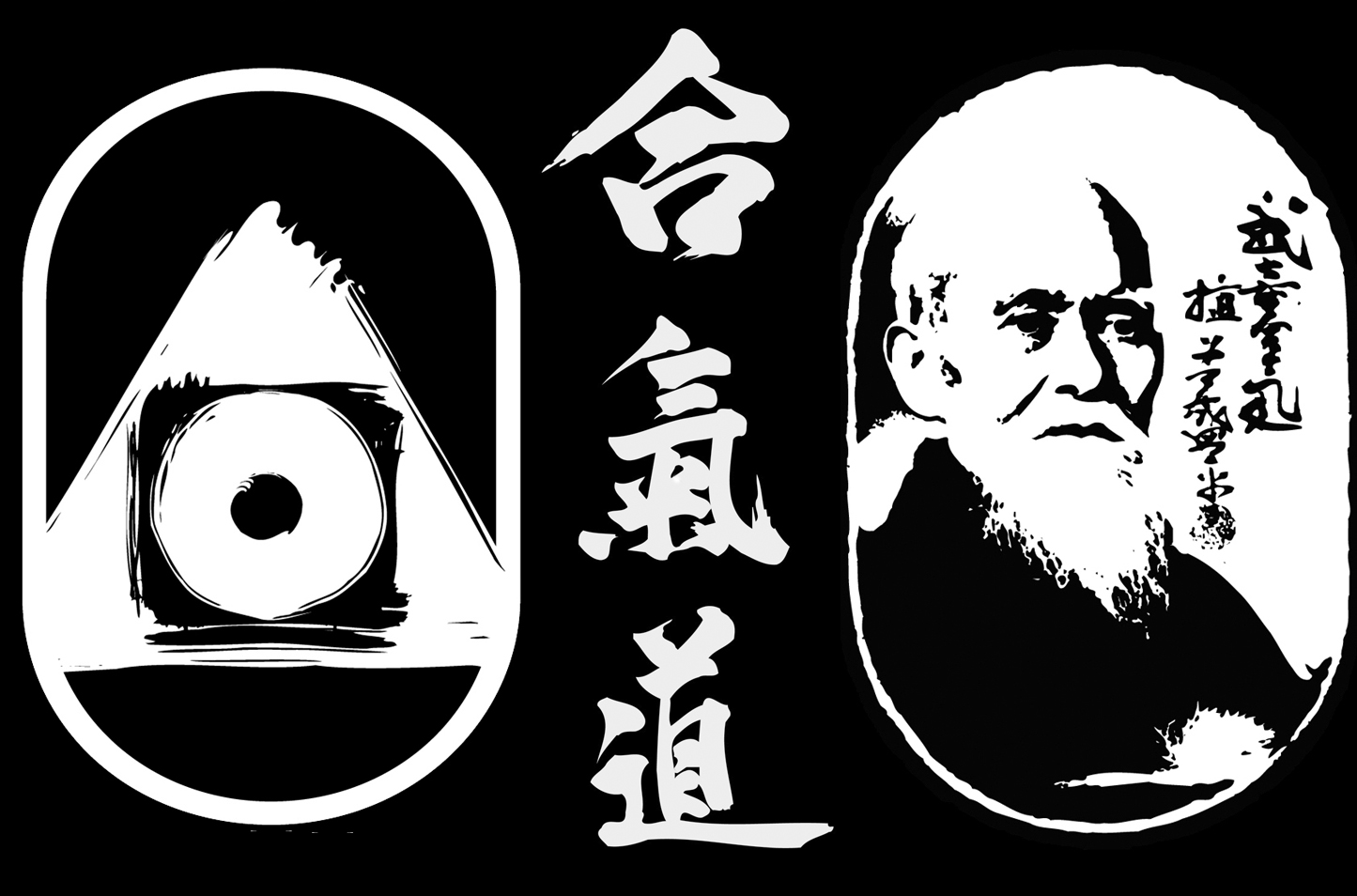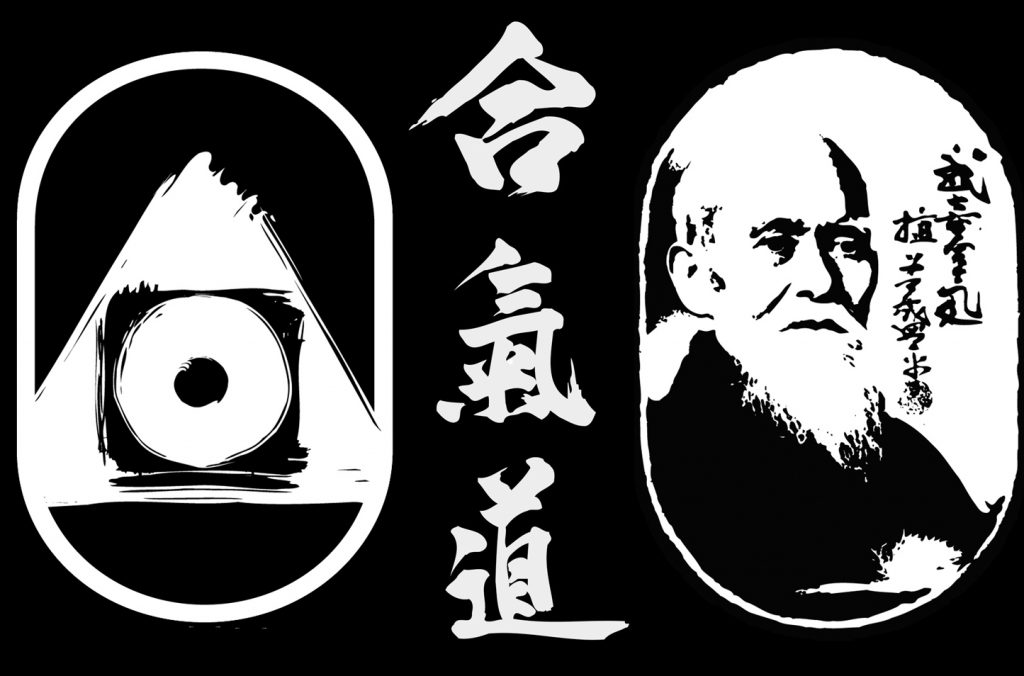What Is Aikido?
The name Aikido is composed of three Japanese words: ai, meaning harmony; ki, spirit or energy; and do, the path, system or way. Aikido is the way of the spirit of harmony. Martial arts are studied for self-defense and self-improvement but Aikido is different from other martial arts in that practitioners seek to defend themselves without causing injury to their attackers.
Honored Traditions and High Ideals
The basic movements of Aikido are circular in nature; most attacks are linear. The Aikidoist harmonizes with, rather than confronts, an aggressive line and converts it into a circular motion that renders attackers helpless. Instead of using potentially crippling locks or punches, the Aikidoist trains to apply various wristlocks, arm pins, or unbalancing throws to neutralize aggressors without serious injury. Aikido is not a sport. There are no competitive tournaments. Aikidoists train to better themselves without belittling others, and as Aikido seeks not to cause harm, techniques can be practiced eventually at full power without fear of injury. Aikido is the newest of the traditional Japanese martial arts, holds the most modern outlook, and is proud of its high ideals.
Aikido, Past to Present
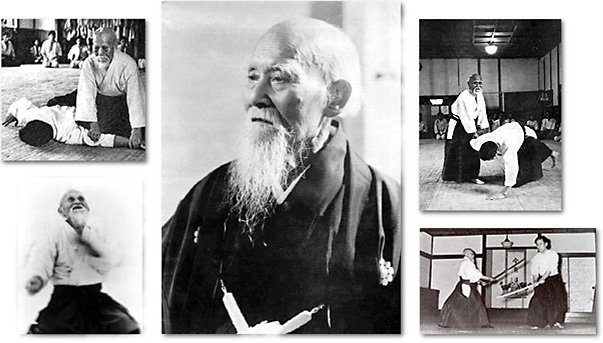
Morihei Ueshiba, now called O-Sensei (Great Teacher), founded the martial art known today as Aikido. Born in 1883 in Wakayama Prefecture, Japan, he dedicated himself to becoming strong after seeing his father assaulted by political opponents. He sought out and studied under various masters of many traditional martial arts, eventually becoming expert at a number of styles of jujitsu (unarmed combat), kenjutsu (sword fighting), and sojitsu (spear fighting). Dissatisfied with mere strength and technical mastery, he also immersed himself in religious and philosophical studies. The stories of his immense physical strength and martial prowess are impressive enough, but more important is the legacy of nonviolence and human integrity he left to mankind.
In early 20th-century Japan, involvement in the martial arts was a competitive and dangerous business. Contests, feuds and rivalries often resulted in injuries and even deaths. The formulation of Aikido dates from an incident that occurred in 1925. In the course of a discussion about martial arts, a disagreement arose between O-Sensei and a naval officer who was a fencing instructor. The officer challenged O-Sensei to a match, and attacked with a wooden sword. O-Sensei faced the officer unarmed, and won the match by evading blows until his attacker dropped from exhaustion. He later recalled that he could see the opponent’s moves before they were executed, and that was the beginning of his enlightenment. He had defeated an armed attacker without hurting him–without even touching him.
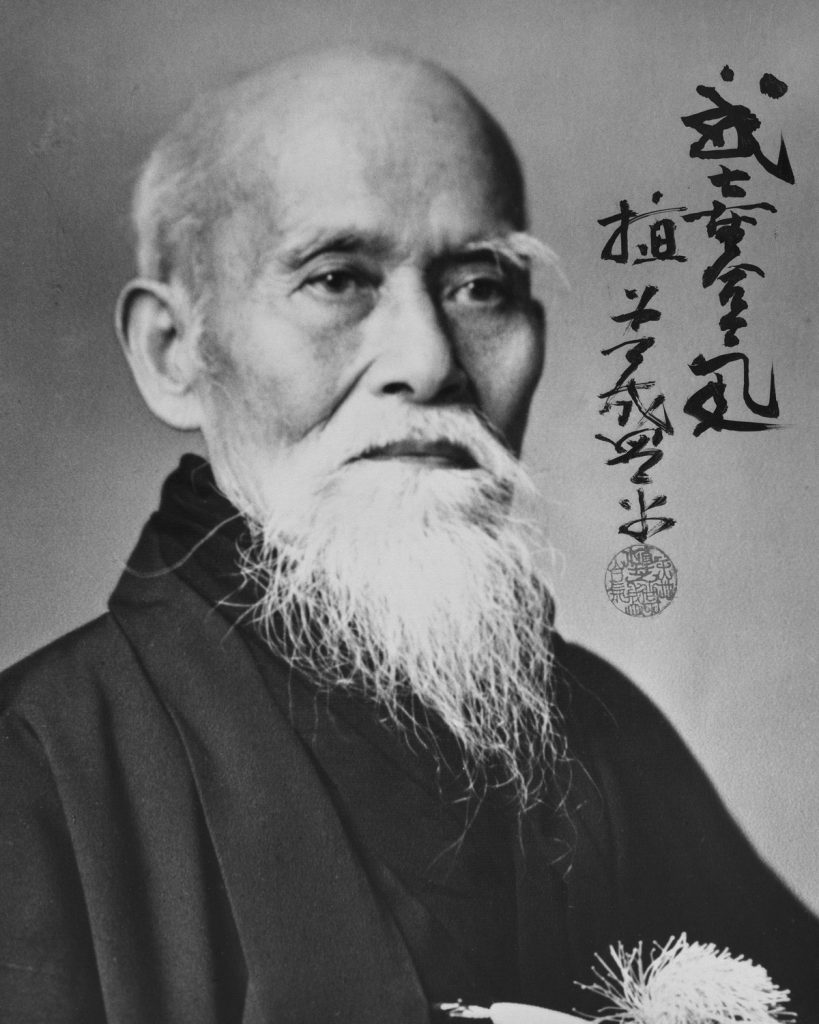
O-Sensei later wrote: “Budo (the Martial Way) is not felling the opponent by our force; nor is it a tool to lead the world into destruction with arms. True Budo is to accept the spirit of the universe, keep the peace of the world, correctly produce, protect and cultivate all things in nature.”
O-Sensei continued to practice and teach Aikido into his old age. Observers would marvel at his martial abilities, vitality and good humor; he was still giving public demonstrations of Aikido at age 86, four months before his death. After he passed away on April 26, 1969, the Japanese government posthumously declared Morihei Ueshiba a Sacred National Treasure of Japan.
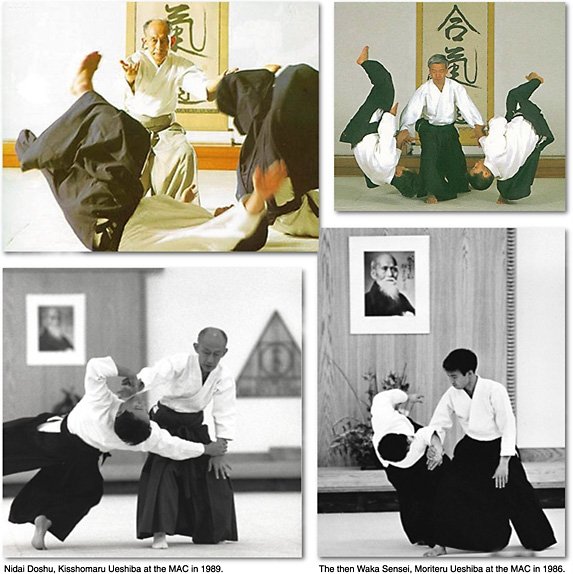
O-Sensei’s son, Kisshomaru Ueshiba, inherited the title Doshu (Leader of the Way). He continued his father’s work at Aikido World Headquarters (Hombu Dojo) until he passed away in 1999. Today, O-Sensei’s grandson, the third Doshu, Moriteru Ueshiba, continues to enlighten the lives of men, women and children from over seventy countries throughout the world.
Training in Aikido
Anyone can train in Aikido. People of all ages, backgrounds, and fitness levels enjoy exploring the art of Aikido. On any given day, our dojo is filled with a wide variety of students, ages 7 to over 70, representing all walks of life, from many cultures. All bring different experience to their training, which is part of what makes studying Aikido fascinating and rewarding, even among those who have been training for dozens of years. If you are thinking of beginning your Aikido training or if you have recently started, please see the USAF New Student Guide. Please feel free to Contact Us any time with specific questions or concerns. You can also stop by, without appointment. All classes are open to the public and someone will be available to discuss your specific needs, concerns, or interests. We encourage and invite you to come see our dojo for yourself!
Testing for Rank
The MAC holds rank testing several times a year. Please see the USAF Testing Requirements (PDF). Students wishing to test must have fulfilled the required minimum days practiced, be up to date on dues and all membership requirements, and obtain the required instructor recommendation. The best way to be prepared for a test is to train consistently and begin your preparations well before the date looms on the calendar. Your fellow members at the dojo want you to succeed. Seek out their assistance early and often!
Other than accumulating the required number of hours, how do students know when they are ready to test? Tohei Sensei’s response: “If you are hesitant or afraid to take the test, then you are not ready. Having the minimum required hours is simply the starting point from which you can begin to look at your own practice and gauge whether or not you are ready. Being able to do certain techniques is not the only criterion. Since there is no competition or tournaments, Aikido cannot be measured by technique only … factors such as demeanor in the Dojo, participation in special events, paying attention to cleaning, and showing good character do influence the grading.”
In response to the question “How can one supplement training for a test?” Tohei Sensei responded:
“Come to class, come to class, come to class.”
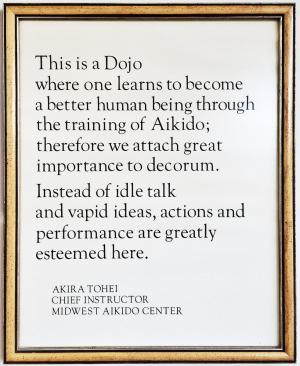
All members should attend tests whenever possible. Like seminars, tests are events for the whole dojo community. Please support your fellow members by joining us on test nights. Please see the calendar for upcoming test dates. Students who want more information on testing should feel free to ask questions of any instructor.
